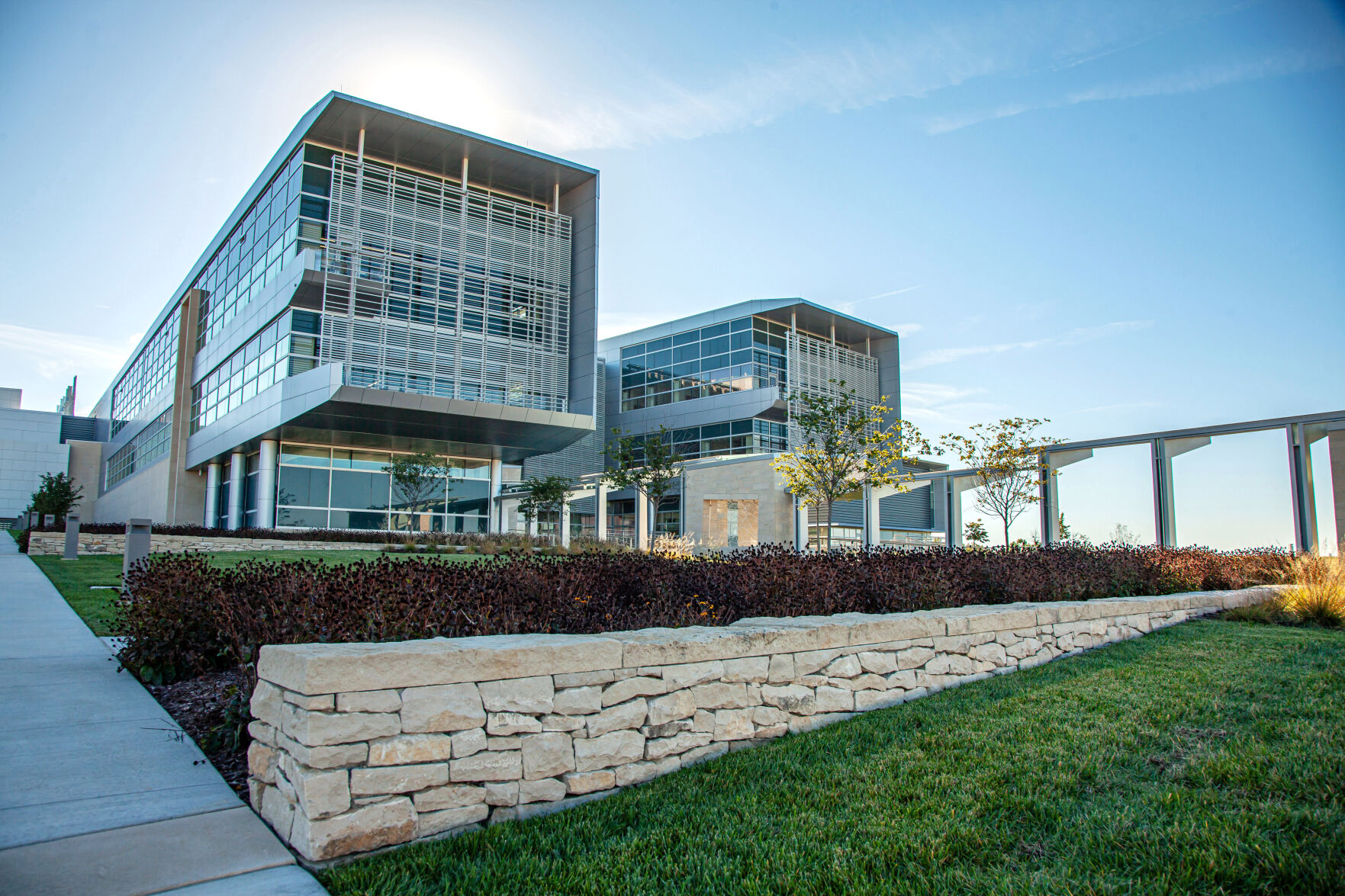After nearly $1.25 billion, 60,000 cubic yards of concrete and 13,000 tons of steel, the National Bio and Agro-Defense Facility in Manhattan, Kansas, is open for business—19 years after it was first envisioned by then-president George W. Bush.
Members of the media were given a first look at NBAF on May 18.
Four different buildings comprise the 574,000-square-foot, $1.25 billion biosafety level-4 research laboratory that is the successor to the aging Plum Island Animal Disease Center in Plum Island, New York, and is designed to combat biological threats against livestock, predominantly cattle, swine and sheep, involving humans, says NBAF Director Dr. Alfonso Clavijo, DVM.
“The mission is truly to protect the agricultural economy and animal health against transboundary diseases, which are those unusual animal diseases that can easily cross borders and can have significant economic impact,” Clavijo says.
At NBAF, the U.S. Department of Agriculture will conduct research and develop vaccines and anti-virals, plus provide enhanced diagnostic and training capabilities to protect the nation from animal diseases that are:
• Foreign or transboundary—those that could enter the United States from another country;
• Emerging—new or not well known; and
• Zoonotic—normally exist in animals but can infect humans.
The Plum Island Animal Disease Center is a 68-year-old biosafety level-3 facility and has outlived its life expectancy. When planning for NBAF began in 2004, it was under the auspices of the Department of Homeland Security. In 2018—when the facility was under construction—the ownership and oversight was transferred to the U.S. Department of Agriculture.
It is the nation’s only public research unit to provide maximum biocontainment laboratories capable of housing large livestock for research and diagnostics of zoonotic diseases, Clavijo says.
Examples of research undertaken at NBAF include foot-and-mouth disease, African swine fever and classic swine fever.
Gradually, several laboratories will transfer operations from Plum Island to NBAF. These include the Foreign Animal Disease Diagnostic Laboratory and the Foreign Animal Disease Research Unit. Two new USDA units, the Foreign Arthropod-Borne Animal Disease Research Unit and the Zoonotic and Emerging Disease Research Unit will focus on research and countermeasures for high-consequence animal diseases, according to NBAF.
In addition, NBAF researchers will conduct research and development for vaccines, biotherapeutics and diagnostics for foreign animal diseases, according to Clavijo.
After operations are transferred, the Plum Island site will eventually be decommissioned and decontaminated.
Safe and secure
Plum Island was a remote location, with employees having to ferry to the facility from the mainland. With NBAF being built in the middle of livestock country, safety and security are paramount.
The structure, located on 48 acres on the north edge of the Kansas State University campus in Manhattan, is built to withstand an EF-5 tornado and its walls can absorb a car flying through the air at 92 miles per hour.
Researchers working with pathogens follow a strict sanitation protocol, including hazmat suits, shower-in and shower-out procedures—from two times daily to 19 times daily, depending on the scientist—and pressure-locked laboratories and alleyways. All surfaces are coated with anti-tear materials and easy-to-clean paints and finishes. Moreover, any contaminated animal pieces are incinerated and double-killed to ensure pathogens are eliminated, says Carlos Rodriquez, a member of the general engineering staff at NBAF.
Throughout the project’s planning, design and building phases, NBAF employed a community liaison group to ensure the public stayed informed of the process and work to be performed and has worked to ensure the public understands the facility will be safe and secure.
When NBAF is fully operational, more than 400 employees will work on site. USDA has established a roadmap for qualified researchers through a fellowship, internships, and a recruitment process.




